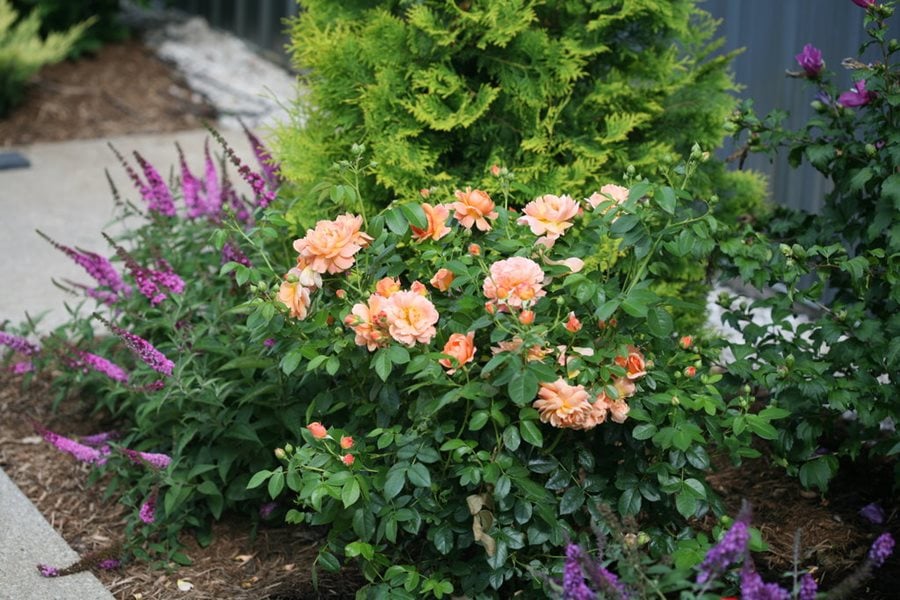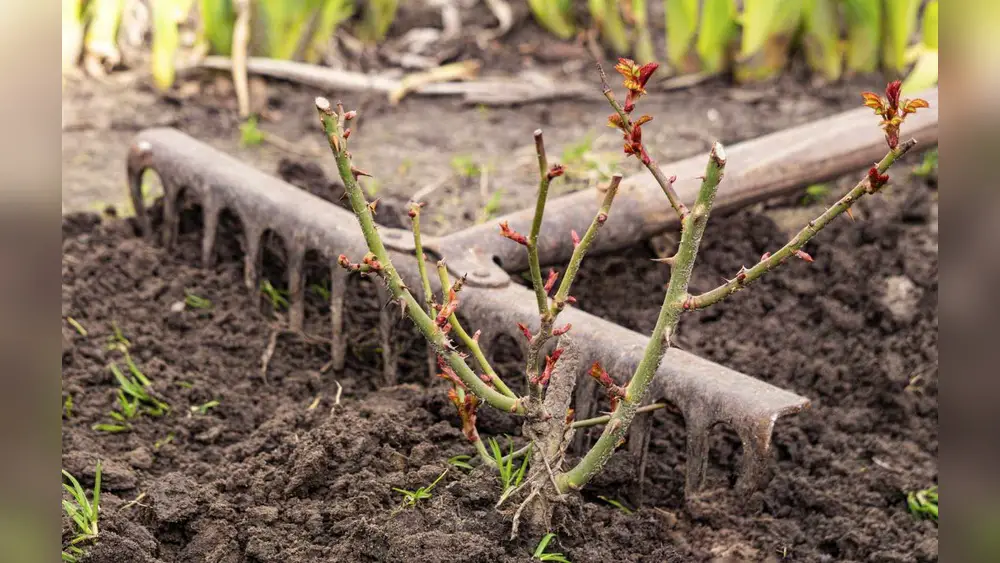If you want your rose bushes to thrive in Florida’s unique climate, knowing the best time to plant them is key. Planting at the right moment can mean the difference between a struggling bush and a stunning, fragrant garden centerpiece.
You might wonder, “When exactly should I plant my roses to get the most beautiful blooms? ” This guide will walk you through the ideal planting months and essential tips to help your roses flourish under the Florida sun. Keep reading to discover how to make your rose garden a success year after year!
Florida Climate And Roses
Florida’s climate is unique and affects how roses grow. Warm temperatures and high humidity shape the best planting times for rose bushes. Understanding this climate helps gardeners choose the right moment to plant.
Roses need a balance of sun, heat, and moisture to thrive in Florida. The state’s weather patterns change throughout the year, influencing rose health and bloom cycles. Choosing the right season can lead to stronger, more beautiful plants.
Seasonal Weather Patterns
Florida has hot, humid summers and mild winters. Summer temperatures often rise above 90°F with high humidity. Winters are cooler but rarely drop below 40°F. Rainfall is heavy in summer and lighter in winter. This pattern creates a growing environment that favors certain rose varieties.
Spring and fall offer moderate temperatures and less humidity. These seasons provide ideal conditions for planting roses. The soil is warm, and rain supports new root growth. Avoid planting during the intense summer heat to prevent stress on young bushes.
Impact On Rose Growth
Heat and humidity can cause diseases like black spot and powdery mildew. These issues reduce rose health and flowering. Proper planting times help roses establish strong roots before summer arrives. Well-established roots increase drought tolerance and disease resistance.
Cooler months slow down rose growth but reduce pest problems. Roses planted in fall or early spring often grow better. They develop gradually and bloom more vigorously. Timing planting with Florida’s climate leads to healthier, longer-lasting rose bushes.
Ideal Planting Months
Choosing the right time to plant rose bushes in Florida boosts their growth and blooms. The climate in Florida is warm and humid, affecting rose care. Knowing the ideal planting months helps gardeners avoid heat stress and disease. Plant roses when soil and air conditions support root development and plant health. Two main periods stand out for rose planting: spring and fall. Each season offers unique benefits for rose bushes.
Spring Planting Window
Spring is a popular time to plant roses in Florida. The months of February through April provide mild temperatures and good rainfall. Roses planted during this window establish roots before the summer heat arrives. Early spring planting allows bushes to grow strong and healthy. New roses will have time to adapt to the environment. The soil is warm enough to encourage root growth but not too hot to stress plants. Spring planting reduces the risk of frost damage. Gardeners can enjoy fresh blooms by late spring or early summer.
Fall Planting Benefits
Fall offers excellent conditions for planting rose bushes in Florida. September through November is the best period. Cooler temperatures and shorter days help roses focus on root growth. Fall planting prepares bushes to survive the winter. The soil stays warm longer, encouraging deeper root systems. Roses planted in fall often bloom earlier the next season. This timing also reduces water needs compared to spring. Fall planting can lead to stronger, healthier plants. It is ideal for gardeners who want a head start on spring blooms.
Selecting Rose Varieties For Florida
Selecting the right rose varieties is vital for success in Florida’s unique climate. Roses must handle the intense heat and humidity. Choosing types that thrive here means healthier plants and more blooms. Many popular roses struggle under Florida’s conditions. Knowing which varieties resist heat and disease helps gardeners enjoy vibrant roses all year.
Heat-tolerant Types
Florida summers get hot and long. Some rose bushes handle heat better than others. Heat-tolerant roses keep blooming despite high temperatures. Examples include Knock Out roses and Fortuniana roses. These varieties need less water and care in hot weather. They also resist sunburn and wilting. Planting heat-tolerant roses reduces stress on plants and gardeners.
Disease-resistant Varieties
Florida’s humidity promotes fungal diseases like black spot and powdery mildew. Disease-resistant roses have built-in defenses. They need fewer chemicals and less maintenance. Examples include Drift roses and many shrub roses. These varieties stay healthy in moist conditions. Choosing disease-resistant types saves time and money. It also helps roses grow strong and beautiful.

Credit: www.gardendesign.com
Soil Preparation Tips
Preparing the soil properly is key to growing healthy rose bushes in Florida. The right soil helps roses absorb nutrients and grow strong roots. Good preparation also prevents problems like waterlogging or poor nutrition. Follow these simple tips to ready your soil before planting.
Soil Testing And Amendments
Test the soil to check its pH and nutrient levels. Roses prefer soil with a pH between 6.0 and 6.5. If the soil is too acidic or alkaline, add lime or sulfur to adjust it. Add organic matter like compost or aged manure to improve soil fertility. This helps roses get the nutrients they need to thrive.
Improving Drainage
Florida soils can hold too much water, which harms rose roots. Ensure your planting area has good drainage to avoid root rot. Mix sand or organic material into heavy clay soils to improve water flow. Raise the planting bed slightly to help excess water drain away quickly. Proper drainage keeps rose roots healthy and strong.
Planting Techniques
Planting rose bushes correctly ensures healthy growth and vibrant blooms in Florida’s climate. Proper techniques help roses establish strong roots and resist pests and diseases. Follow simple steps to give your roses the best start.
Proper Spacing
Space rose bushes at least 2 to 3 feet apart. This distance allows air to circulate around each plant. Good airflow reduces the risk of fungal diseases. Crowded bushes compete for sunlight and nutrients. Proper spacing makes pruning and maintenance easier.
Planting Depth And Orientation
Plant roses so the graft union is 1 to 2 inches below the soil surface. This protects the graft from Florida’s heat. Dig a hole twice as wide as the root ball but no deeper. Position the bush with roots spread evenly downward. Backfill carefully with soil, avoiding air pockets. Water well after planting to settle the soil.
Watering And Fertilizing
Proper watering and fertilizing are key to healthy rose bushes in Florida. Roses need steady moisture and balanced nutrients to grow strong. The hot climate can dry soil quickly, so keeping roses hydrated is crucial. Fertilizing supports blooming and leaf growth throughout the year. Understanding the right care at each stage helps your roses thrive.
Establishing New Plants
Water new rose bushes deeply after planting. Give them enough water to soak the root zone. Water every two to three days for the first month. Avoid wetting the leaves to reduce disease risk. Use a slow-release fertilizer at planting time. This feeds the roots gently as the plant settles. Choose a balanced fertilizer with equal nitrogen, phosphorus, and potassium. Mulch around the base to keep moisture steady and protect roots.
Ongoing Care Schedule
Water roses once or twice a week after establishment. Increase watering during dry spells or heat waves. Apply fertilizer every six weeks from spring to fall. Use a rose-specific fertilizer or a balanced 10-10-10 mix. Stop fertilizing by late fall to help plants prepare for dormancy. Remove old blooms to encourage new flowers. Check soil moisture regularly and adjust watering as needed. Consistent care keeps roses healthy and blooming longer.
Pest And Disease Management
Managing pests and diseases is crucial for healthy rose bushes in Florida. The warm and humid climate can encourage many pests and fungal problems. Proper care helps roses thrive and bloom beautifully. Regular inspection and timely action reduce damage to your plants.
Common Florida Rose Pests
Florida roses often face pests like aphids, spider mites, and whiteflies. Aphids suck sap from new growth, causing leaves to curl and yellow. Spider mites create tiny webs and cause leaf spots. Whiteflies feed on the underside of leaves and make them sticky with honeydew. These pests weaken roses and spread diseases.
Use insecticidal soap or neem oil to control pests safely. Spray early in the morning or late afternoon to avoid leaf burn. Remove heavily infested leaves to stop pest spread. Encourage natural predators like ladybugs to keep pests low.
Preventing Fungal Diseases
Fungal diseases like black spot and powdery mildew are common in Florida’s humid climate. Black spot shows black circular spots on leaves, causing them to drop early. Powdery mildew appears as a white powder on leaves and stems, weakening the plant.
Plant roses where they get full sun and good air circulation. Water the base of the plant, not the leaves, to keep foliage dry. Remove and destroy fallen leaves to reduce fungal spores. Use fungicides as a preventive measure during wet seasons.

Credit: www.youtube.com
Companion Planting
Companion planting helps roses grow healthier and look better. Some plants work well next to roses. They can improve soil, attract helpful insects, or keep pests away. Choosing the right companions makes your rose garden stronger and more beautiful.
Good companions also add color and variety. They create a balanced environment around your rose bushes. This balance helps roses get enough sunlight, water, and nutrients. It also reduces disease risks and pest problems.
Best Plants To Grow Near Roses
Lavender is a perfect match for roses. It repels pests and attracts pollinators. Marigolds help keep harmful insects away. They also add bright colors around rose bushes. Catmint and salvia are great for attracting bees and butterflies.
Alliums grow well near roses. Their strong scent deters aphids and other pests. Geraniums also help by repelling Japanese beetles and other harmful bugs. These plants improve rose health without competing for nutrients.
Plants To Avoid Near Roses
Shade-loving plants like hostas and ferns do not suit roses. Roses need at least six hours of sunlight daily. These shade plants can stunt rose growth and reduce blooms.
Aggressive spreaders such as mint and morning glory crowd roses. They steal nutrients and block sunlight, harming rose bushes. Water-loving plants like iris and canna lilies create too much moisture. This moisture can cause root diseases in roses.
Plants with large root systems like boxwood and lilacs compete strongly with roses. Fennel must be avoided because it releases chemicals that stop rose growth. Keeping these plants away ensures roses get the best care.
Seasonal Maintenance
Seasonal maintenance keeps rose bushes healthy and blooming in Florida’s unique climate. Caring for roses changes with the seasons. Each period demands specific actions to protect and nourish the plants.
Understanding these seasonal needs helps gardeners enjoy vibrant roses year-round. Proper maintenance reduces disease and improves flower production.
Pruning Tips For Florida Roses
Pruning shapes rose bushes and removes dead parts. In Florida, prune in late winter or early spring. Cut back about one-third of the plant to encourage new growth.
Use clean, sharp tools to avoid damage. Remove any weak or crossing branches. This improves air flow and light exposure, reducing pests and diseases.
Regular pruning keeps roses strong and promotes more blooms during the growing season.
Winter Care Strategies
Florida winters are mild but can have cold snaps. Protect roses by adding mulch around the base. Mulch keeps roots warm and retains moisture.
Water roses less frequently but deeply during winter. Avoid overwatering to prevent root rot. Cover sensitive varieties with frost cloth if temperatures drop below 32°F.
Remove any fallen leaves or debris to reduce fungal problems. Winter care helps roses survive and bloom beautifully in spring.

Credit: www.youtube.com
Frequently Asked Questions
What Is The Best Month To Plant Roses In Florida?
The best month to plant roses in Florida is January through March. This timing avoids extreme heat and supports strong root growth. Planting early in the year helps roses establish before summer heat arrives. Choose well-drained soil and a sunny location for optimal growth.
Why Put Baking Soda Around Roses?
Baking soda around roses helps prevent powdery mildew by creating an alkaline environment. It reduces fungal growth and keeps roses healthy.
What Should You Not Plant Around Roses?
Avoid planting shade-loving plants like hostas and ferns, aggressive spreaders like mint, water-loving plants like iris, large-rooted shrubs, allelopathic plants like walnut and fennel, aphid-attracting plants, and vegetables like tomatoes and potatoes near roses.
What Is The Easiest Rose To Grow In Florida?
The easiest rose to grow in Florida is the Knock Out rose. It thrives in heat, resists diseases, and requires low maintenance.
Conclusion
Planting rose bushes in Florida at the right time helps them grow strong. Early spring or late fall offers the best conditions for roses. The warm climate supports healthy roots and vibrant blooms. Avoid planting roses near shade-loving or aggressive plants.
Give them space and plenty of sunlight daily. Healthy roses bring beauty and color to any garden. Remember, timing and location make all the difference. Start planting at the right time for the best results. Your rose bushes will thank you with stunning flowers.

